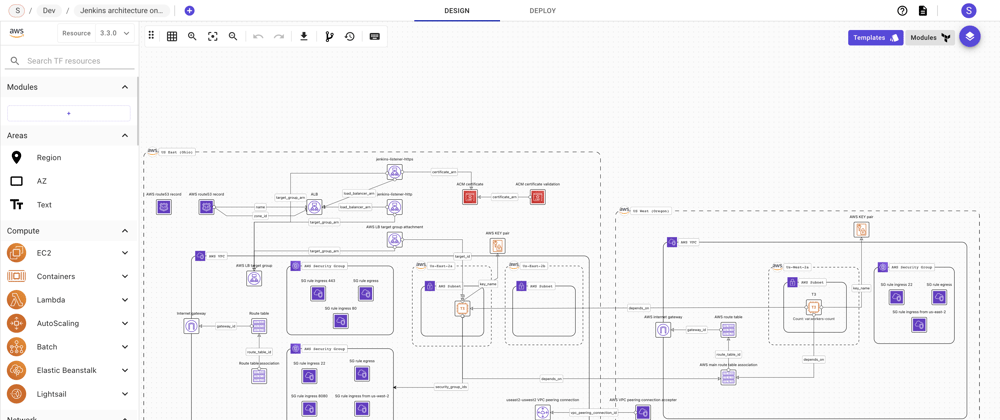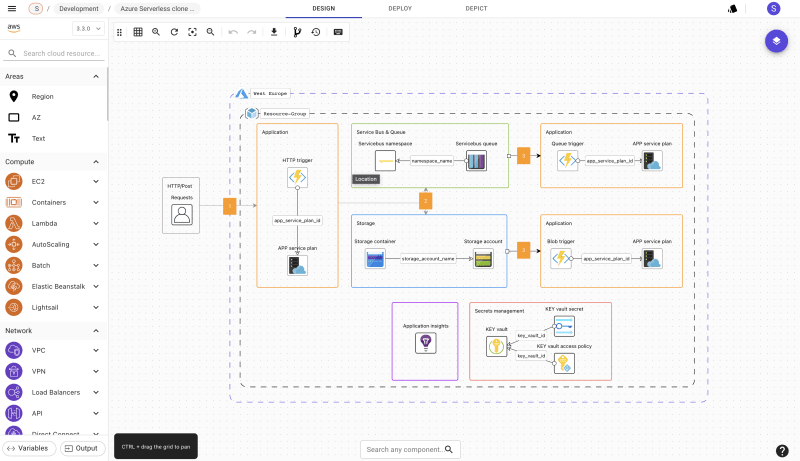Infrastructure-as-code (IaC) is a very well known and popular technology for cloud infrastructure provisioning using principles of application development, i.e. writing code (a programming language). While IaC is emulating application development, the technology has several limitations in the way it is built and works. These make the operationalization of IaC at scale to be challenging.
In 2020, countless industries were forced to accelerate their digital transformation practices, having no other option but to be agile in supporting the new normal: Designing an infrastructure. What has helped lessen the burden for employers? Implementing no-code infrastructures across business practices and processes to empower developers & engineers.
Coding your infrastructure
The code environment has been around for over than 20 years now and was always part of a small community. If you knew how to code, you could publish a website, create an application or deploy a cloud infrastructure.
Today, the world have moved to surpass that moment where only elites could do these things. Everyone has access to the same technologies and everybody can create something, somehow. Obviously, there are better solutions than others for each specific task.
For building an infrastructure, Brainboard have already proven the fact that designing an infrastructure is as easy as drag-and-drop ;) No need to write thousands of Terraform code, Brainboard becomes a one-stop-solution to Design, Deploy & Manage any modern infrastructure.
Nocode
Nocode in 2021
In the next five years, the number of applications built with low-code tools are expected to reach 450 million, with $21.2 billion spent by companies by the end of 2022 on low-code development platforms. By the end of 2023, the number of active no-code developers at high-end enterprises is expected to surpass the number of professional developers by four times.
This business trend is becoming a rising necessity. In a recent Gartner survey covering IT-related business, 46 percent of respondents stated that the increase in business-led IT spend was due to increased development of software, applications, or databases. Another Gartner survey found that 41 percent of respondents are active in citizen development initiatives, while 20 percent of respondents aren’t currently engaged in citizen development or low-code initiatives but are planning to start.
No-code solution allows enterprises to bring far more people, regardless of how tech-savvy they are, into the driver’s seat. In turn, this lessens the burden on the IT teams to fix the smaller, menial issues that arise daily in the workplace.
Nocode for the Cloud
Since its inception, cloud computing has seen major investments by providers like IBM, Microsoft Azure, Google, and Oracle, highlighting the need to expedite the adoption and enablement of simpler connectivity for cloud infrastructure. But, just like any other infrastructure, it needs to be supported and maintained in order to benefit the enterprise.
Businesses that are scaling or adopting cloud infrastructure should consider empowering it further – an automation solution can boost agility and productivity while eliminating manual routine tasks, thus allowing employees to focus on high-value business goals.
The cloud promise was to lower maintenance work and make it easier than managing a data center. But as the services evolved, cloud infrastructure management became more and more complex and hard to maintain. Cloud infrastructures should be codified, versioned and thus reproducible.
Migrating into a Nocode-only environment is a wrong approach of building an infrastructure.
No need to reinvent the wheel, like Chafik (our CEO) says. Brainboard supports the idea of building an ecosystem for everyone to use. Certainly, our solution is for Engineers, Cloud Architect,… Due to its collaborative features and the fact you design an infrastructure to deploy later makes Brainboard nocoder-friendly.
Code x Nocode
No-code allows users to streamline workflow processes and enables anyone in an organization to do the work themselves, without the need to use IT resources.
As more companies move to the cloud, security, and credibility are of the utmost importance in their digital transformation journey.
With the no-code movement, tech teams are empowered to manage their own workflow processes, streamlining projects and minimizing tedious tasks. In turn, this frees up IT teams to better focus their efforts on the overall business infrastructure as we continue to work from home, and fend off continuous security threats. No-code puts employees in the driver’s seat, driving workplace efficiency, reducing burnout, and thereby affording a better work-life balance in the process.
Nocode your infrastructure with Brainboard
Following these new complexities, solutions for developers, like Brainboard, were born. This solution do for cloud infrastructure what no-code and low-code platforms did for application and web development (think Webflow, but for cloud infrastructure). We save engineers valuable time designing their infrastructure-as-code, handling the nitty-gritty details like creating roles and permissions, and much more. Under the hood, Brainboard produce IaC templates with best practices and design patterns built-in.
The visual aspect of no-code and low-code platforms makes your cloud infrastructure designs easier to understand for everyone. Coming back to a project, onboarding new developers or just reviewing is much easier when looking at a drawing. The visual elements—abstractions—that no-code and low-code platforms provide handle certain complexities behind the scenes for you.
Come try Brainboard and see for yourself, how we can help you achieve your cloud infrastructure goals.









Top comments (0)